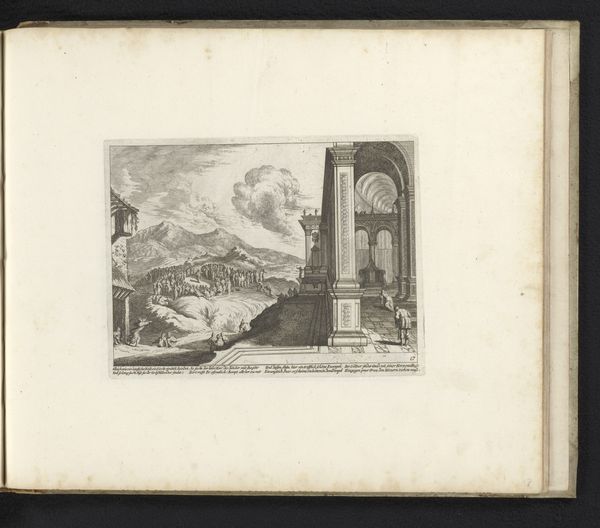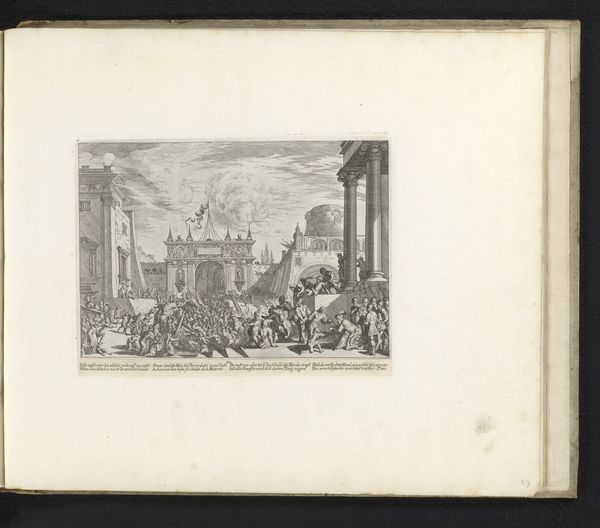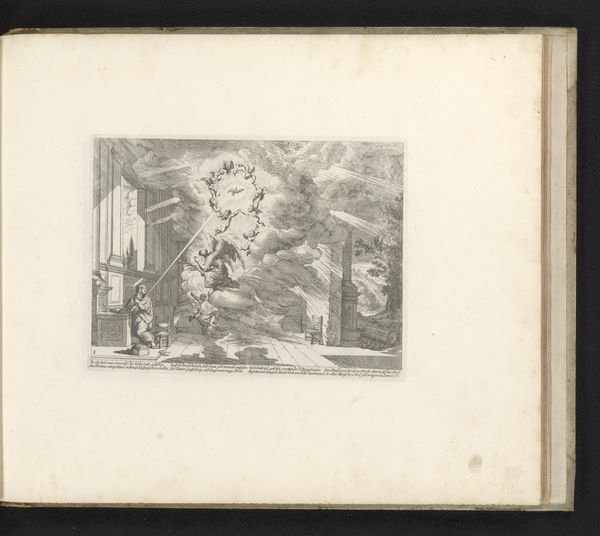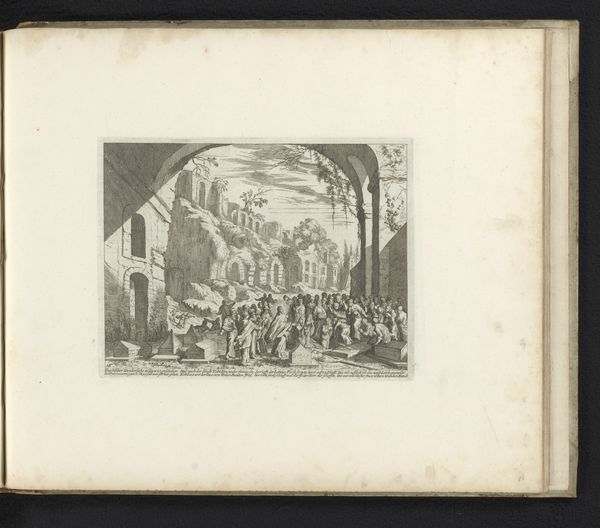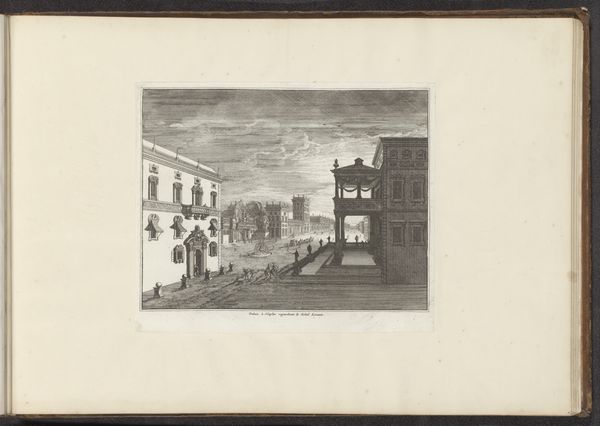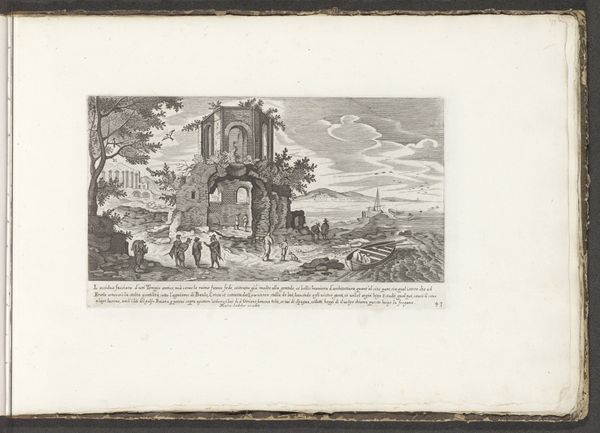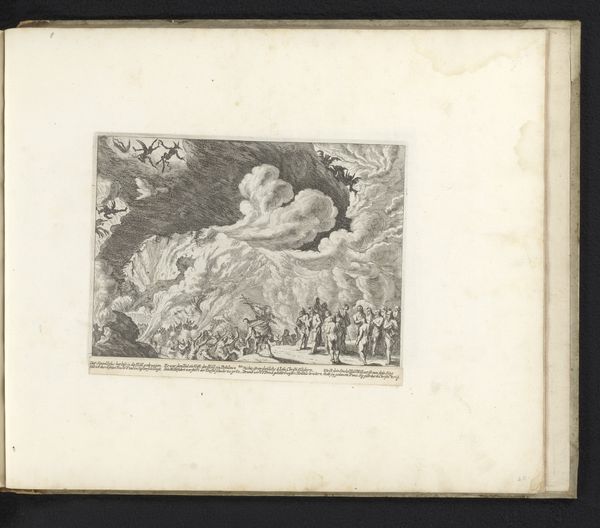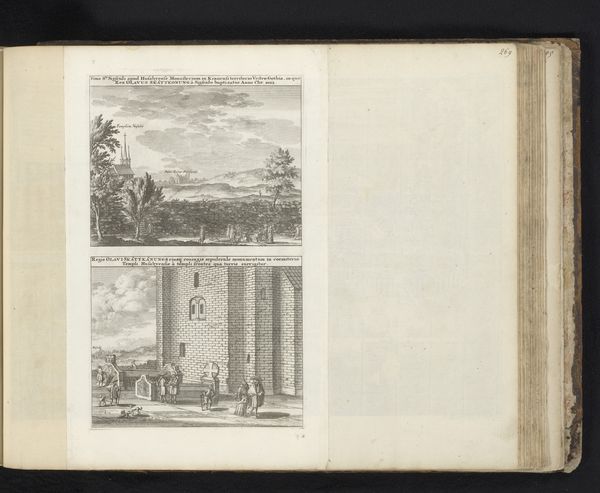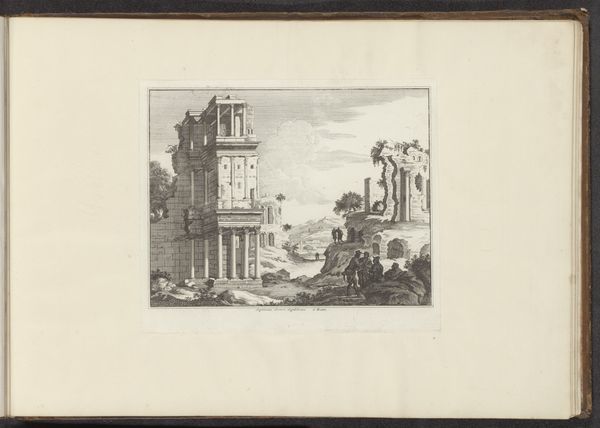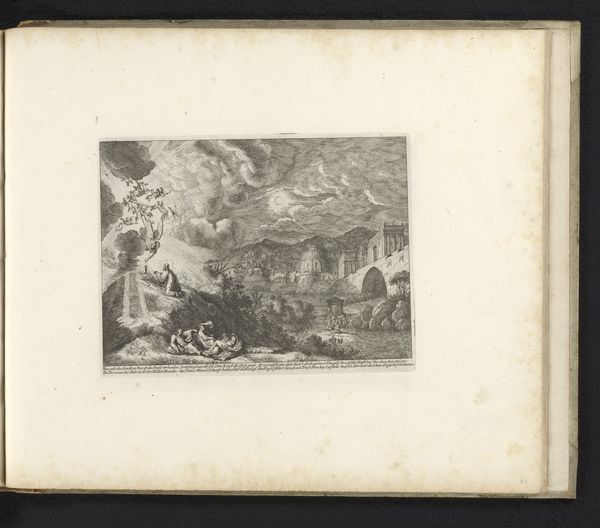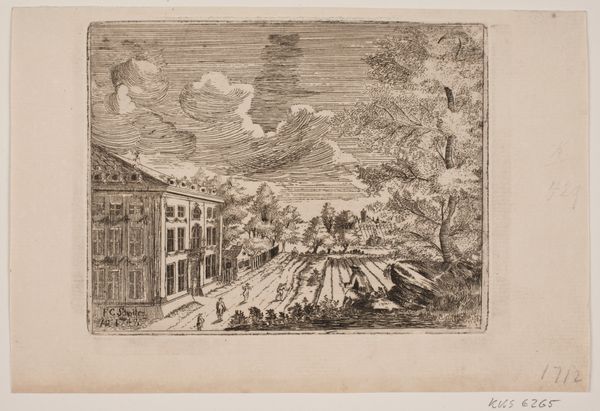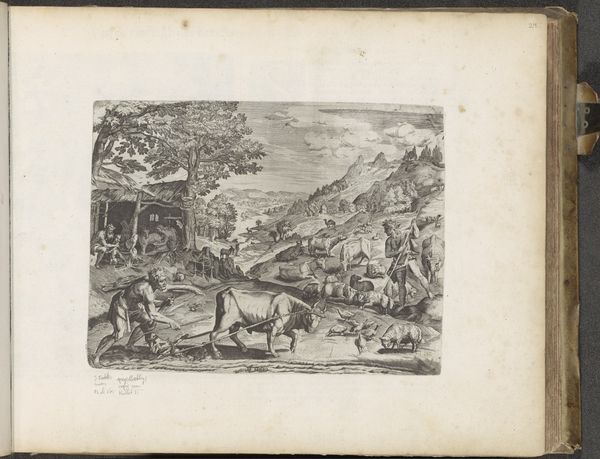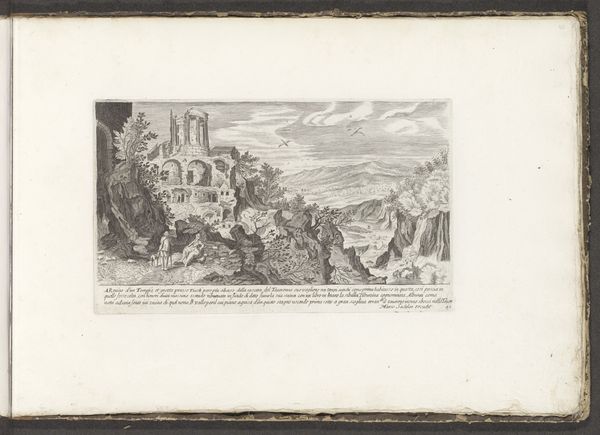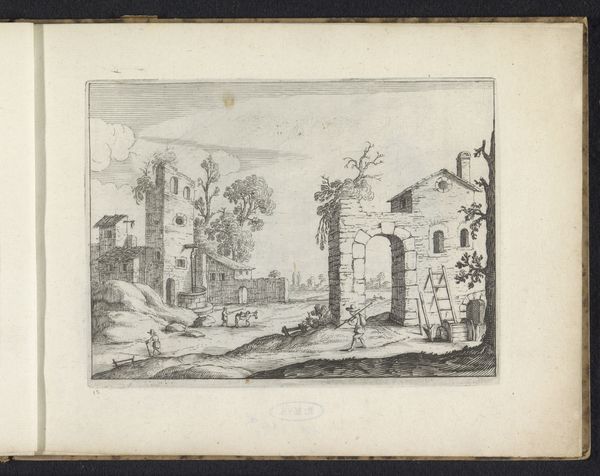
drawing, print, ink, engraving
#
drawing
#
narrative-art
#
baroque
#
ink paper printed
# print
#
figuration
#
ink
#
pen-ink sketch
#
line
#
cityscape
#
history-painting
#
engraving
Dimensions: height 161 mm, width 206 mm
Copyright: Rijks Museum: Open Domain
Editor: So, this is Melchior Küsel's "Herodes voor het gerecht" – Herod Before the Court – from the late 17th century. It’s an engraving, so ink on paper. It looks almost like a stage set; it's really detailed. What do you see in this piece? Curator: As a materialist, my attention is drawn to the socio-economic context of printmaking at this time. This isn't just an image, it’s a commodity produced through labor. How do you think this print would have been circulated and consumed in 17th-century Netherlands? Editor: Well, given it’s a print, it would have been more accessible than a painting. So probably more for a middle-class audience, right? Maybe even used in books for illustrations. Curator: Precisely. This brings us to the function of prints: disseminating knowledge, reinforcing social values through visual narratives. Who was the intended audience and what stories were considered important to reproduce in this medium? Also, note the engraver’s skill in rendering architecture and figures with just line – do you think the technique used to create such pieces helped to standardize visual representation and possibly to normalize particular aesthetic values in this period? Editor: Definitely, I hadn't considered how prints helped spread a certain visual style. The act of reproduction, of circulating images – that has its own influence, almost democratizing art while also, as you said, normalizing specific viewpoints. Curator: And don't forget the economics of art and skill involved! Engraving wasn’t exactly painting, so perhaps the art world thought of it as 'less than'? The value of the raw materials is one thing, but it does imply value in labour. It definitely makes one question traditional hierarchies. What do you think the influence of this work had on subsequent imagery of the period, and also modern approaches? Editor: I see what you mean. Thinking about how it challenged the traditional view of "art". Really opened up the work to questions of its place in culture. Thanks! Curator: Agreed! And reflecting upon a production approach helps frame modern pieces also. Very worthwhile!
Comments
No comments
Be the first to comment and join the conversation on the ultimate creative platform.
